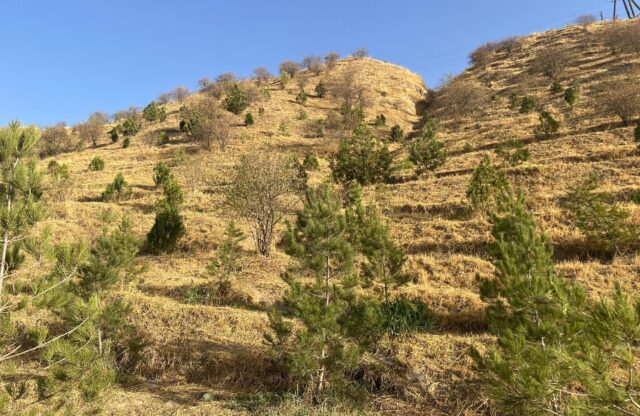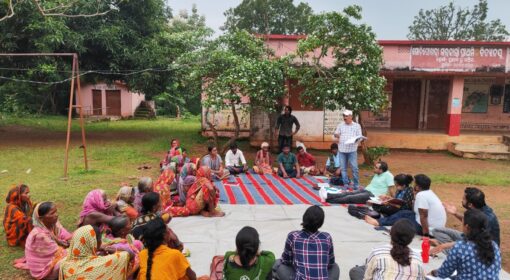Madibron Saidzoda and Frank van Steenbergen

Photo 1: The restored Machiton Turn hillside: pine trees and apricots
Postcard from Machiton Turn, a wooded area along the Dushanbe-Wahdad highway in Tajikistan. This is how it is done – the greening of roads in Tajikistan. For several years the Foresty Agency has been working to introduce forest belts along the roads. The definition of a forest in the Tajikistan is: at least 10% tree cover, a width of no less than 10 meters wide and a length of at least 60 meters long. As roads wind their way through the flatland and mountain regions in Tajikistan, the Forestry Agency has been planting forests strips and shelter belts along the roads as well as encouraging forest recovery on the hills alongside roads. In a few cases it has combined this with basic landscaping measures, such as terracing.
The land is under various types of ownership: individuals, government – including the Forest Agency. In Machiton Turn the hillside land was used as farmland and local pasture. The land was degraded before the Forest Agency and the local government intervened in a cooperation with several parties and in consultation with the local communities.
Planting was done under communal self-help work – a system called hashr. Every Saturday people spent time on communal work, repairing local infrastructure, cleaning roadsides, removing garbage, planting trees. It is often a joyous get together and the work is considered blessed or sadakai jorija. One gets the blessings of the birds that sit on the tree one planted or from the persons who pick the fruits.
The way it is organized is that the Foresty Agency approaches the District Chairperson with a proposal to restore the land. The District Chairman then approaches the Chairman of the Jamiot (subdistrict), who in turn asks village and street committees to undertake the work. In Machiton Turn, community members helped in planting the trees and did much of the terracing. It was important to protect the young trees from wandering livestock. The Government provided a fence on the top of the hill removed the under toe of the hill. It also arranged for drip lines to irrigate the saplings in their critical first years. This is an indicator of a changed climate: in the past planting in the cool and moist September month would get the young trees going. Nowadays lifesaving drip irrigation or watering by hand is almost always needed.
The community members have sections allotted to them for which they take care. They are allowed to plant fruit trees among the pine trees and cut the grass for their livestock. The Forest Department replanted the trees that did not survive.
In other areas the Forest Agency has made tailor-made arrangements with private landowners. It is almost always a win-win: barren land becomes productive and free from erosion, income opportunities are created, and driver experience and alertness improve.



